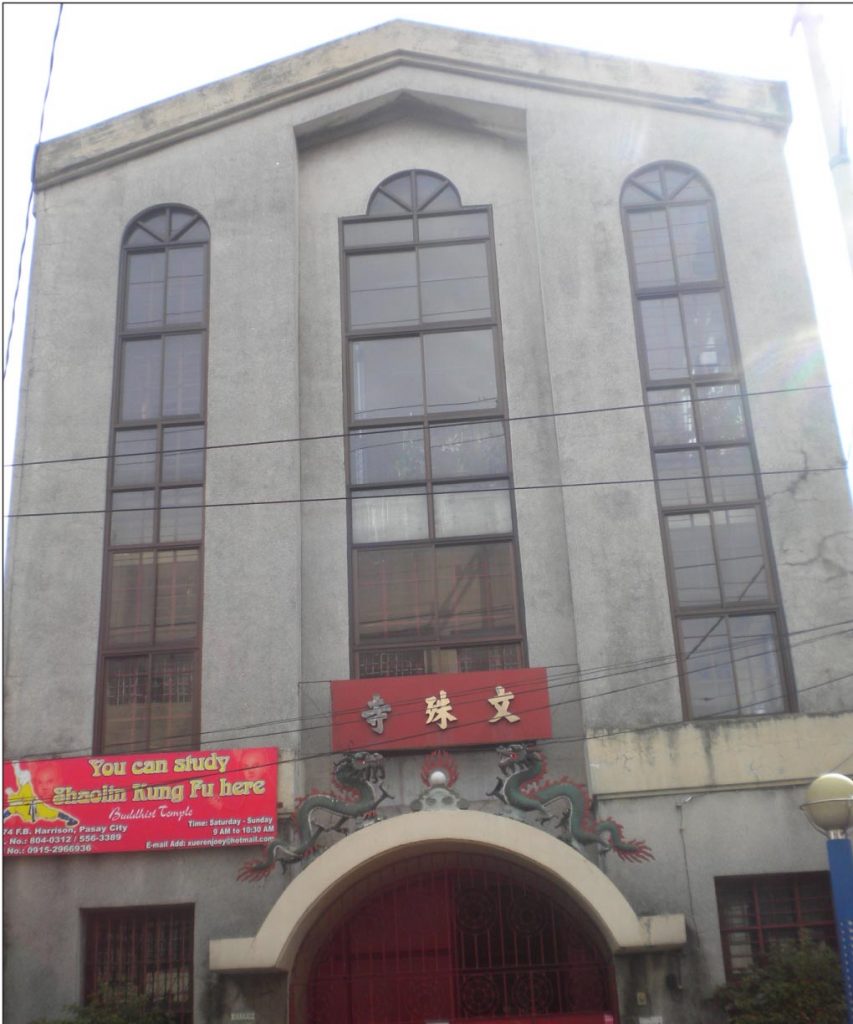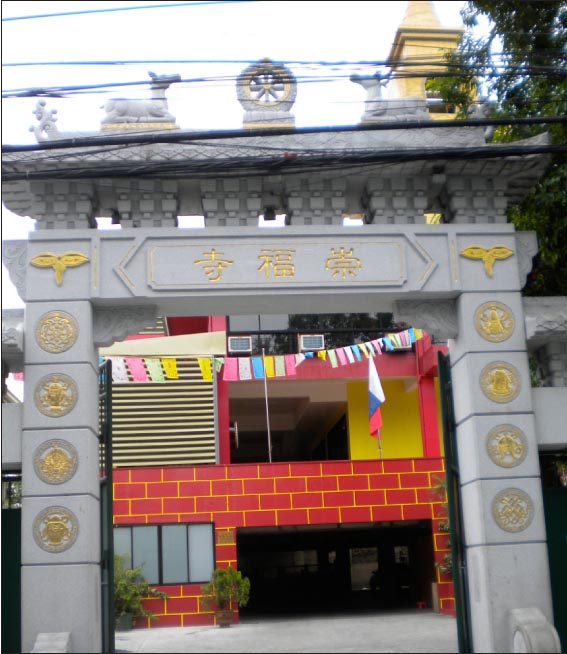This is the first of a series about the Chinese Buddhist temples of the Philippines. There are around 36 in different parts of the country. Much of the information is from a thesis of Venerable Chuanmiao (Hsuan Chuang University, 2008), a Buddhist monk affiliated with the Thousand Buddha Temple in Quezon City.—Ed.
Chinese temples dot the Philippine archipelago wherever significant numbers of Chinese have settled. Many Tsinoys grow up with experiences of these places, where the smell of incense permeates, and the serene surroundings provide a haven to pray for the deceased, to offer thanks for blessings received, or to request guidance on life’s journey.
In ordinary conversation, these places are usually referred to simply as Chinese temples, but in fact they can be classified as Buddhist, Taoist, or mixed temples, depending on the faith tradition that is followed.
In this series, this author provides basic information about the Chinese Buddhist temples of the Philippines (around 26 in different parts of the country), to provide Tulay readers with an overview of the size and scope of institutional Chinese Buddhism in the Philippines.
The information comes my fieldwork over the last two years, and from the masters’ thesis of Venerable Chuanmiao (Hsuan Chuang University, 2008), a Buddhist monk affiliated with the Thousand Buddha Temple in Quezon City.
The latter provides a more detailed chronology of each temple’s history and the biographical sketch of each temple’s succession of abbots/abbesses.
“Chinese Buddhist temples” here refer to temples staffed by Buddhist monastics—monks, nuns, or the vegetarian women known as qing gu 清姑, a special form of religious life in southern Fujian that found its way to the Philippines.
(Qing gu is the more formal term for what Tsinoys may know as caigu 菜姑, which may be considered disrespectful. Technically, in proper Buddhist language they should be referred to as Upasikas (youpoyi 優婆夷 or qingxiunu 清修女).
Several temples in the country were founded by these lay sisters. Taoist temples and mixed temples run by lay people, specially the spirit mediums, are not included here. Temple names are given in the form used by the temples, either in English or Hokkien.
Usually, a temple’s English name is simply the romanized form of its Chinese name, but in a few instances, the English name comes from the temple’s legal name which may follow another logic (e.g. Holy Buddhist Temple or Che Wan Temple).
Personal names of monastics are given in Mandarin pinyin, since they are usually addressed generically as seehu (shifu 師父).
In some instances, this author has provided the Hokkien pronunciation of monastics who are well known in the community.

1. Bun Su Temple (文殊寺)
2711 F. B. Harrison St., Pasay City (Tel.: 833-2570)
Near Chong Hoc Temple (崇福寺) and a Taoist temple dedicated to Bao Wang Gong (包王公), this small temple was built by nun Zhenyuan (真源), also known as Pong Ko (凸姑).
Born in Jinjiang, southern Fujian in 1928, she began living at the Soc Yan Temple (宿燕寺) in Quanzhou at age nine under the tutelage of nun Wenlian (文連), who later founded the Soc Yan Temple in Manila.
In 1965, Zhenyuan was invited to the Manila temple, where she stayed until 1974. Then she left for Bacolod to take care of Fa Tzang Temple (法藏寺), as requested by Venerable Ruijin (Suikim 瑞金). She stayed until 1982.
Returning to Manila, she rented private lodgings until she had enough resources to build Bun Su Temple in 1990. In 2003, aged 75, she turned over ownership and administration to Chong Hoc Temple through Ven. Zhengzhe (正哲). She continues to live in the temple.
Main buildings. Built in modern style almost resembling a Christian place of worship, the building has three floors. The ground floor has a shrine to Guanyin, goddess of mercy, and a dining room; the second floor has a shrine to the Bodhisattva Manjusri after whom the temple is named, and living quarters; the third floor enshrines Buddhas of the five directions.
Leadership and primary activities. A small group of lay devotees gathers at the temple every fourth of the lunar month and on Buddhist feast days for chanting services. The temple’s future is in the hands of the Chong Hoc Temple. — First published in Tulay Fortnightly, Chinese-Filipino Digest 25, nos. 15-16 (January 15-February 4, 2013): 23-24.
